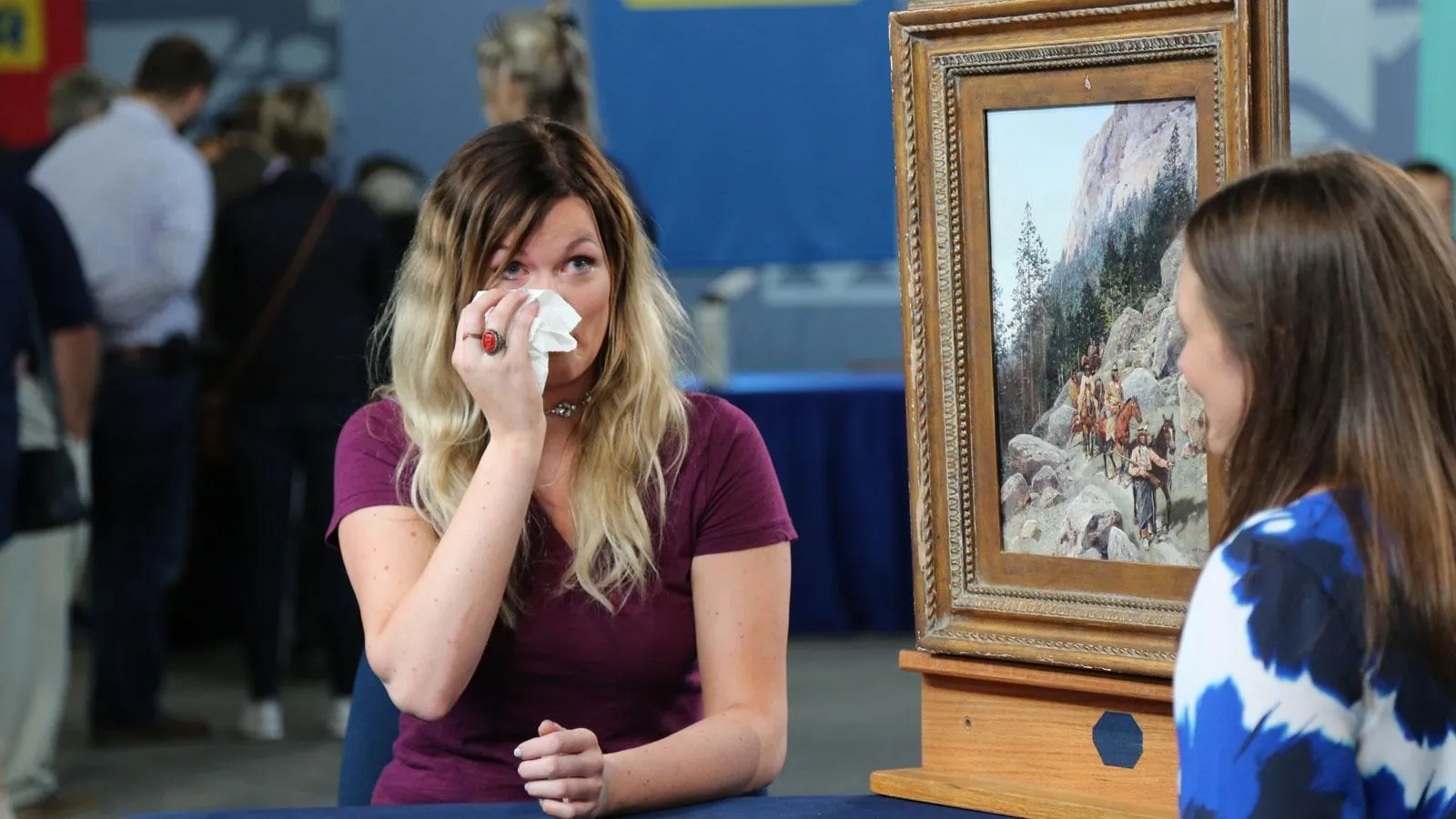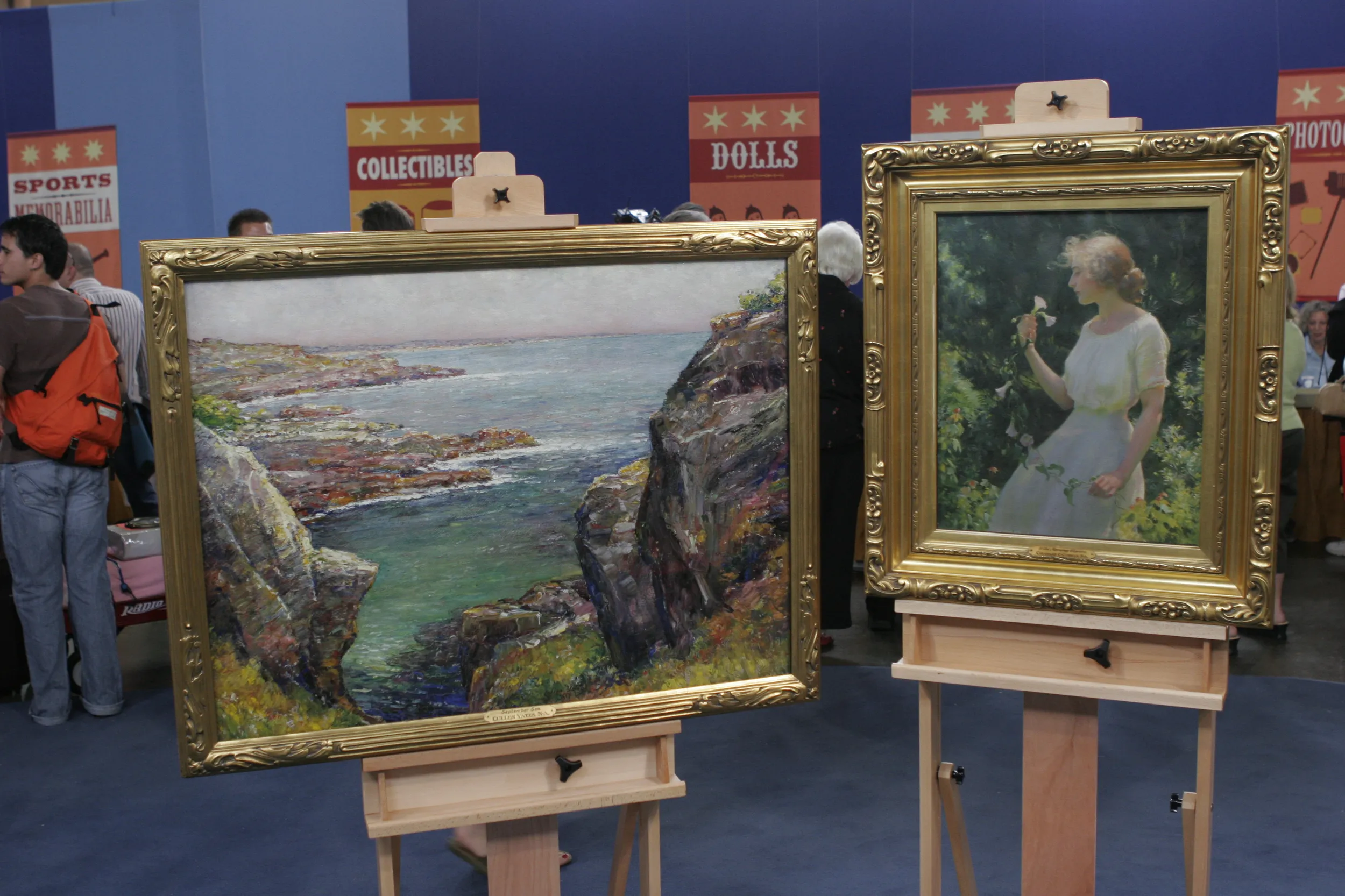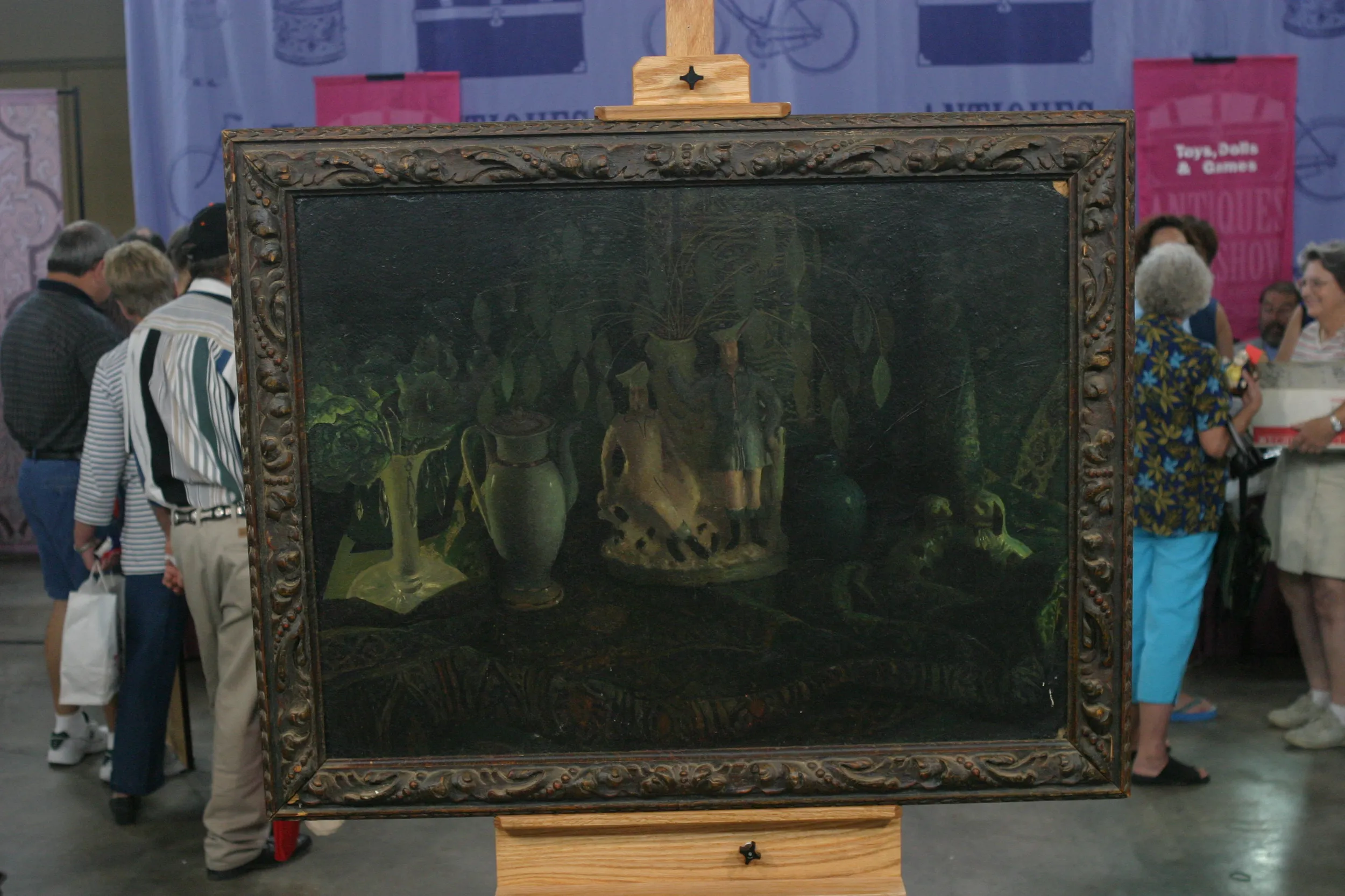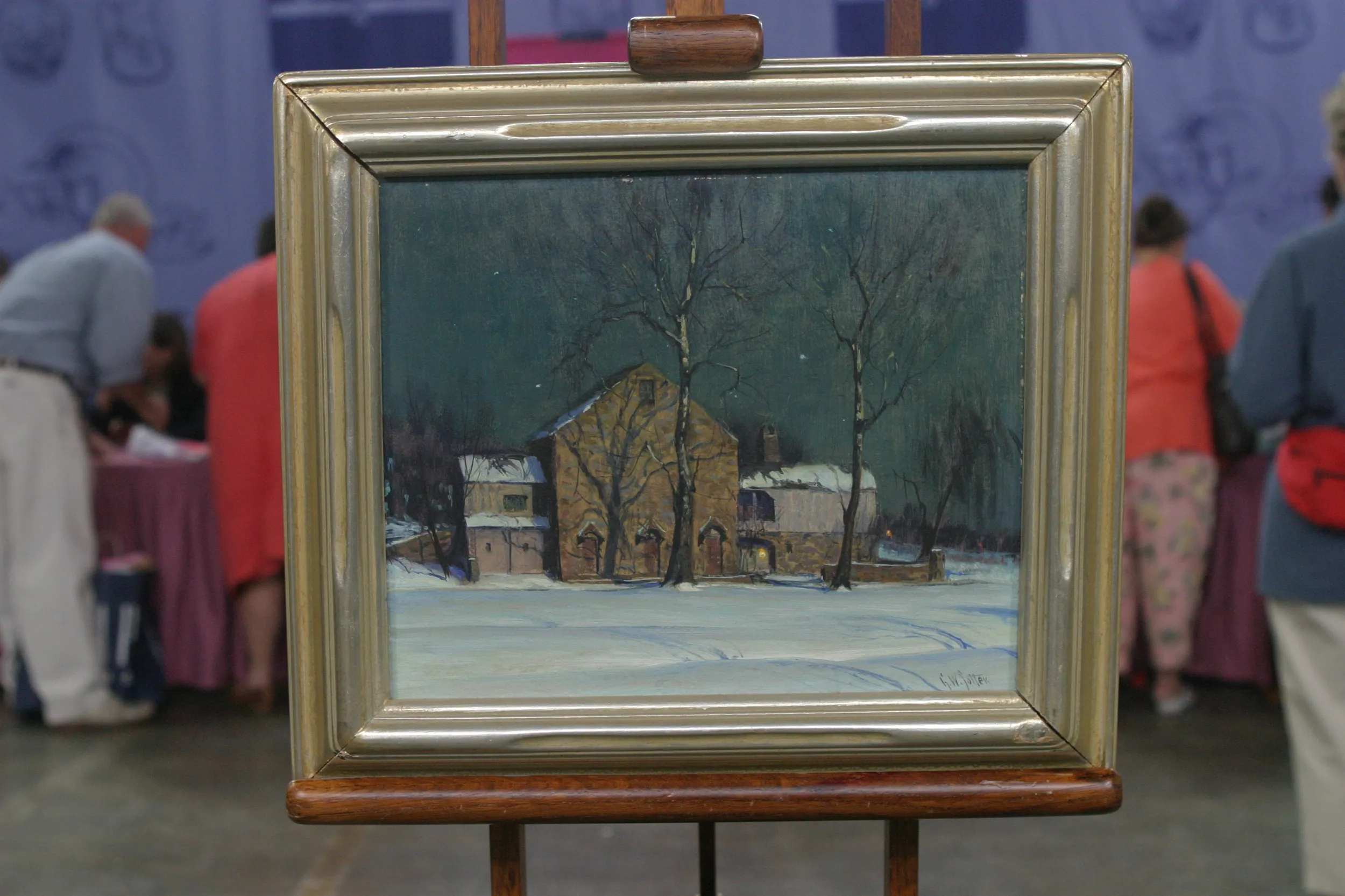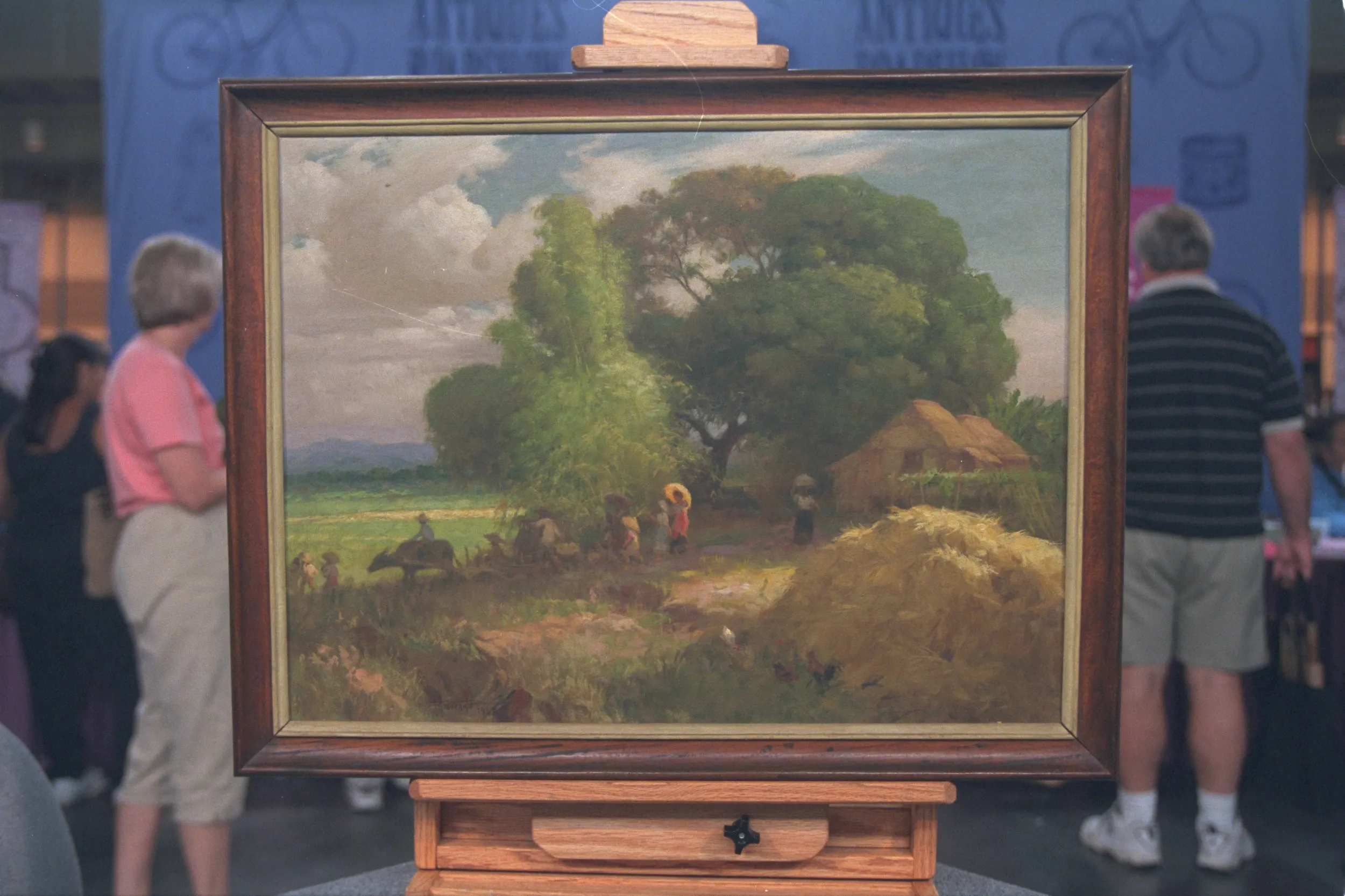GUEST: So this is a painting that I was given when my grandmother passed away. It always hung right above her bed. Her dad, I'm guessing, would've given it to her after she spent the summer at a dude ranch, when she was 19 in, like, the '40s. When I got it, there was a mosquito underneath the glass, so I took it out to the front yard and I opened it up to get the mosquito out so I could take it with me to college. And then it kind of scared me a little. I closed it back up immediately because it looked like it might be real.
APPRAISER: And have you had it appraised before? Do you know if she had it appraised?
GUEST: It was appraised in, like, a general house appraisal twice. In 1998, it was appraised as a print at $200. And in 2004, it was appraised at $250.
APPRAISER: Okay, do you know anything about the artist?
GUEST: I know he was born in France and then he moved to Northern Pennsylvania. So he could've been in the area at the time when he was painting it, when it was given to my grandmother. And then he moved out to Ohio, but he had associations with, like, the Sioux tribe, so they actually adopted him in. Okay. And they gave him a cipher, Long Boots, and that's what that little circle underneath his signature is.
APPRAISER: Mm-hmm. That's the artist, it's Henry François Farny.
GUEST: Mm-hmm.
APPRAISER: He was born in France. He came to Pennsylvania when he was about six years old. When he was living in Pennsylvania, he began a relationship with the Seneca Indians, and that's really where his fascination with the different tribes began. This piece is really interesting because it's a dense group of figures, which is very desirable in his work. He did eventually spend a lot of time with the Sioux Indians, and they did adopt him and gave him the name Long Boots. This is really his most prolific time. 1890 is about when we start to see some of his very best paintings. He represented the Native Americans in a very kind of peaceful, tranquil way. And you can see that in this painting, he didn't ever really bring conflict into his work, as some of the other artists from that time did-- Charles Russell and Remington. So if we were going to put this in an auction today, I would suggest an estimate of $200,000 to $300,000.
GUEST: (murmuring) (sniffs softly) (voice trembles) So I can't hang it up. Oh, my God. (exhales) That's so much. (chuckles) (sniffs) I don't even know what to say. Oh, my goodness. (sighs) So I'll keep it away from my dog.


